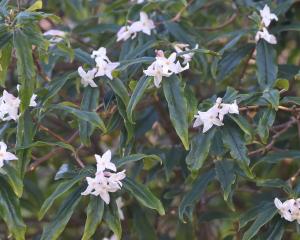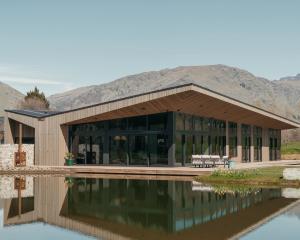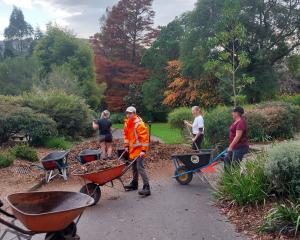The mural is about 2000 years old, but its flowers look as fresh as a daisy.
The fresco was excavated from a townhouse in Pompeii and depicts a typical garden in the doomed Roman city in the shadow of Mount Vesuvius.
We see exotic palms and native viburnums, a bubbling birdbath, garden statuary and trees full of various bird species.
In short, it's a depiction of a garden that we would immediately recognise and feel comfortable in.
Aided by the Mediterranean climate, Pompeians built city houses that brought the outdoors in and the indoors out, and they cherished their little gardens.
No wonder students of landscape architecture still study how they did it. But the form was more than just for function.
For the residents, the seamless home and garden was essentially an elaborate stage where they practised the gracious art of otium, or cultured relaxation.
"Maybe it's a forgotten art," said Carol Mattusch, guest curator of "Pompeii and the Roman Villa", an exhibition at the National Gallery of Art, Washington.
Perhaps we can revive it, for the show offers more than a look at la dolce vita before Vesuvius erupted in AD79.
It provides clues to extracting more pleasure from our own gardens.
An area first settled by the Greeks, Pompeii, Herculaneum and the other seaside towns became especially fashionable when the Roman aristocracy, including emperors, built large villas overlooking the Bay of Naples.
Pompeii became a thriving and fashionable city filled with an urban elite that may not have had the riches to build large villas but emulated the sweet life in the big houses.
The garden fresco comes from one of the more opulent, multi-storey townhouses in Pompeii, known today as the House of the Golden Bracelet.
It was one of three similarly themed wall paintings in the living room, which faced a real garden with a fountain, a pool and a pergola.
The adjoining room, the dining room, also has garden paintings and a view of the garden.
Dining rooms were called tricliniums because they contained three couches on which to recline, eat and admire the garden.
Typically, you would enter a house through a vestibule to an atrium, which was open to the sky and where rain would be channelled into a central decorative square basin called an impluvium.
The garden would be opposite the atrium, with a covered walkway around the edges, called a peristyle, whose walls would also have paintings.
Pompeii existed before the globalisation of horticulture, and these ancient Romans would not have known an azalea or a flowering dogwood tree.
But they still had a rich palette of plants from all corners of the Mediterranean and beyond.
The fresco from the House of the Golden Bracelet reveals oleander, myrtle, rose, quince and pine, as well as the strawberry tree, a handsome ornamental with smooth, mahogany-red bark.
The image also brings alive the date palm, laurel, poppy, viburnum, bindweed and other plants.
The variety of flora shown is amazing.
So why you would also need artisans to paint murals of the same plants might seem odd, but it was part of heightening the effect and blurring the lines between real and imagined.
The arrival of water, with the construction of a vast aqueduct from the north, transformed the gardens here in the decades before the eruption.
Through a network of lead pipes, Pompeians had pressurised running water, and they went to town with fountains, waterfalls, canals, fishponds and garden statuary.
The exhibition contains a charming bronze angler from the House of the Little Fountain.
In addition to all the plumbed pieces, these gardens were full of statuary, some almost cluttered with small pieces.
Herms were carved posts rising to waist height that were capped with heads of gods and satyrs. The fresco shows two herms whose heads are topped with plaques.
Every scene or figure told a story. Otium may have been the opposite of negotium (business), but this leisure was work.
The statuary of mythic heroes, mischievous satyrs or Greek philosophers spurred intellectual discussions with guests and served as ways to show off art.
"And have a beautiful garden," Mattusch said, "listening to the birds and water. Imagine. This is a lifestyle to which we all secretly aspire, but do we know how to get there?"
Well, I've got my resolution sorted out for 2009. A lot more otium in the garden.











